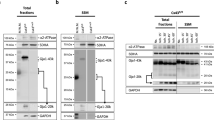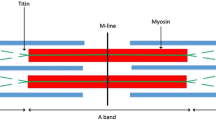Abstract
The present study investigated the influence of Bay K 8644 and nifedipine (Nif) on the force-frequency relationship and on tetanic tension and force of contraction of failing human myocardium (PAP, n = 12). In addition, ryanodine (Rya) was studied on the force-frequency relationship. Bay K 8644 (0.1 μM) increased, but Nif (0.01 μM) reduced isometric force of contraction significantly. However, both, Bay K 8644 (2 Hz vs. 0.5 Hz: Control: −31.6 ± 7.8 %; +Bay K 8644: +103 ± 30 % (% basal); p < 0.005) as well as Nif (2 Hz vs. 0.5 Hz: Control: −8.8 ± 9.7 %; +Nif: +90.9 ± 31.5 %) (% basal); p < 0.05), were able to restore a positive FFR in PAP. By measurement of tetanic tension and posttetanic potentiation in the presence of the 1,4-dihydropyridines, we support the hypothesis of the existence and functional relevance of a dihydropyridin-ryanodine receptor junctional complex. In skinned fiber preparations, Bay K 8644 showed no effect on Ca2+-sensitivity or caffeine induced Ca2+-release. Rya (10 μM) decreased force of contraction in PAP and was effective in restoring a postive FFR (2 Hz vs. 0.5 Hz: Control: −7.3 ± 5.1 %; +Rya: +98.0 ± 31.9 % (% basal); p < 0.05). Thus, the altered FFR and Ca2+-homeostasis in failing human myocardium may result from changes in sarcolemmal Ca2+-influx and/or from altered SR-Ca2+-load.
Similar content being viewed by others
Author information
Authors and Affiliations
Additional information
Received: 27 August 1998, Returned for 1. revision: 24 September 1998, 1. Revision received: 23 October 1998, Returned for 2. revision: 20 November 1998, 2. Revision received: 18 December 1998, Accepted: 22 December 1998
Rights and permissions
About this article
Cite this article
Reuter, H., Zobel, C., Brixius, K. et al. The force-frequency relationship is dependent on Ca2+-influx via L-type- and SR-Ca2+-channels in human heart. Basic Res Cardiol 94, 159–170 (1999). https://doi.org/10.1007/s003950050139
Issue Date:
DOI: https://doi.org/10.1007/s003950050139




